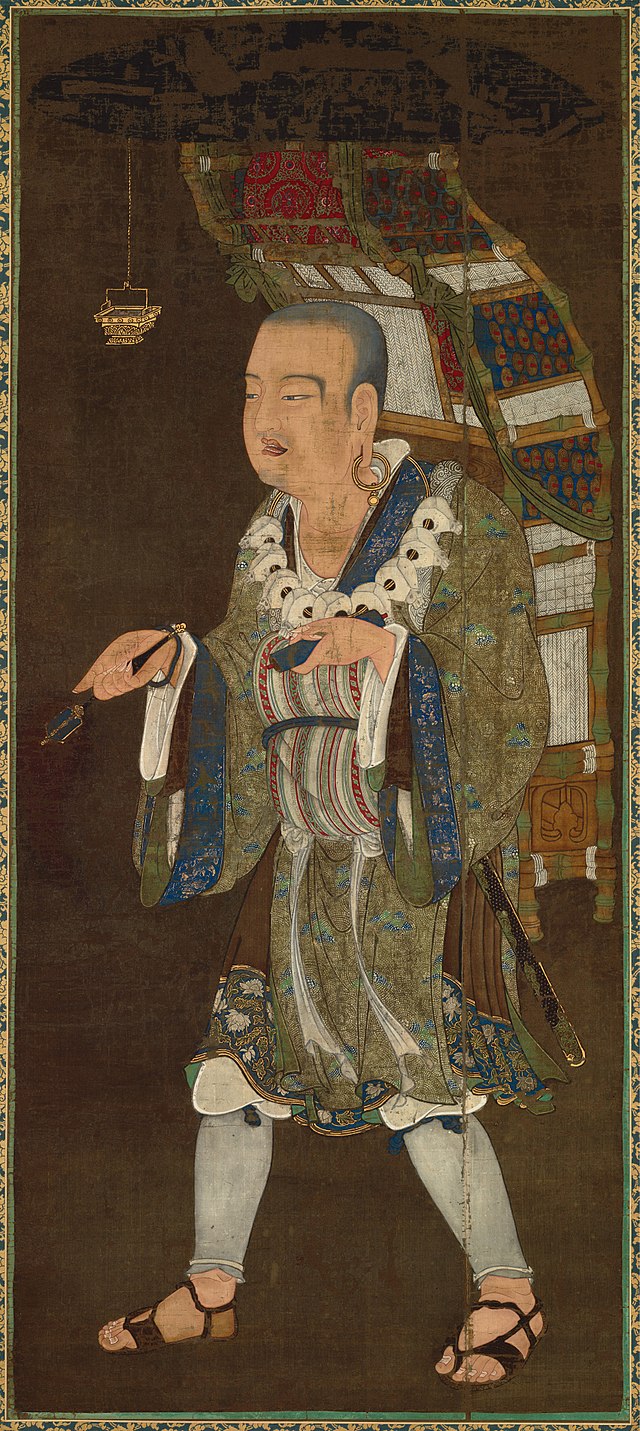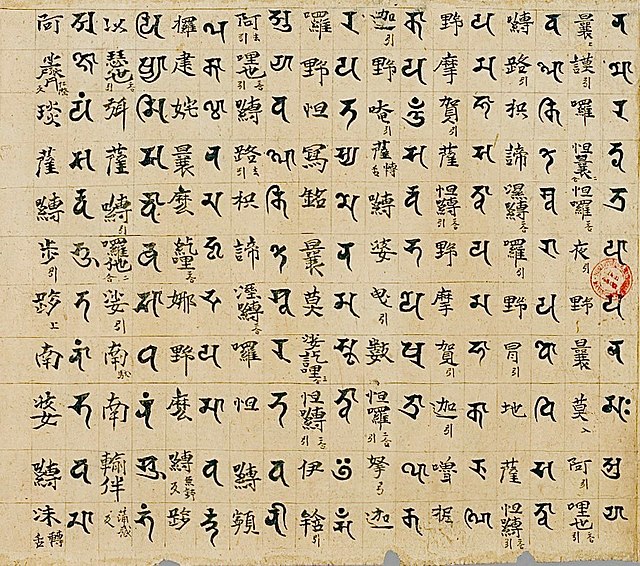

India is a celebration of numbers,& not just in the Mathematical sense! Jewel-bright colours, a multitude of customs, various regional cuisines ranging from bland to spicy & everything in between, hundreds of languages, a variety of different scripts, & more than a billion people!

There are over 800 languages1 today,& plenty more existed in ancient times. We have technology & apps that can translate text or audio in a matter of seconds. Yet we find it difficult to understand one another & rely on that Universal Indian Language - English, or the Aspiring Universal Language – Hindi (although some Indians south of the Vindhyas & in the North-East are putting up a spirited fight!). So with all these different tongues & long before English became the lingua franca, how did Indians of yore communicate with each other? How did they bridge the divide between the people in the north of the Vindhyas & those south of these mountains?

Ancient India was a dynamic mix of languages, & dialects, much like today. Vedic Sanskrit, the language of the Rig Veda, composed sometime around 1500 BCE, was possibly the mother tongue of the people of the Vedic culture. Vedic Sanskrit itself is a part of the Indo-European language family, & quite similar in grammar & vocabulary to Old Avestan2 (spoken in Persia or present-day Iran).
Sometime in the 2nd millenium BCE, winds of change blew over the sub-continent. People crossed borders. Civilisations clashed, & chaos ensued. Tribes met, married & communicated in varied tongues. A confluence of languages flowed down the Saraswati in the Indus valley & beyond. Thereafter, several regional languages or the Prakrits3, as they were known, were used by people in various kingdoms & republics in the sub-continent.

The common people of ancient India relied primarily on oral tradition to record transactions, convey information, pass on religious traditions or stories, entertain themselves through music & drama, & preserve history and memories. Reading & writing were specialised skills, restricted to a small group of people such as kings, priests, scribes, authors, poets, & teachers. Writing on materials such as palm leaves, wood, cloth, etc. was time-consuming, & expensive. Writing was used primarily to record extraordinary events, royal proclamations, donations, & gifts or announcements through inscriptions, or to document religious or philosophical treatises, & literature.
Manuscripts & inscriptions were mostly commissioned by wealthy merchants, kings, or religious institutions. They were not commonly found in all homes. So how would a scholar, writer, or dramatist overcome these challenges to convey her work to a larger audience, & not limit herself to a small region that spoke her mother tongue? How would a king proclaim his victories & grants to future generations? The answer often lay in Sanskrit, or saṃskṛtam.

Classical saṃskṛtam was a predominantly literary language & provided the perfect platform. Particularly from the 1st century BCE onwards, saṃskṛtam was not the lingua franca of the common people4, but was employed in religious rituals, to write poems, plays, philosophies, & treatises or to document Hindu, Buddhist or Jain religious texts & scriptures such as the Vedas, Upanishads etc4.
A study of manuscripts in India shows that over 70% of Indian manuscripts & quite a few inscriptions in India are written in saṃskṛtam [5][5.1]. Outside India, there are manuscripts or inscriptions in saṃskṛtam in South & Central Asian countries such as Sri Lanka6, Myanmar, Indonesia, Thailand, Cambodia, Malaysia7, Nepal, Tibet, Afghanistan, Turkmenistan, Kazhakhstan7, etc. Indeed, manuscripts & inscriptions in saṃskṛtam have even been found in Korea, Japan, & China7.

The Bakhshali manuscript8 dated 2nd or 3rd century CE, records the very first time that the numeral zero was found in Indian manuscripts. This manuscript is written in saṃskṛtam, in the Sharada script. Indonesian king Mulavarman’s sacrifices in 4th century CE were etched on rock in saṃskṛtam, in the Pallava Grantha script9. Kulothunga Cholan’s exploits were inscribed in saṃskṛtam in Kedah, Malaysia, for people to marvel at 10. Chanakya Neeti, Shakuntalam, Ramayana, Mahabharata, the Puranas & so many other works that are a part of the Indian imagination & culture, were written, copied & preserved in saṃskṛtam in various parts of the country. This ritual of copying & conserving manuscripts over centuries was complemented by our rich oral traditions in native tongues that absorbed local myths & customs in their many re-tellings across the Indian subcontinent.

Saṃskṛtam thus became a vehicle for people to preserve their ideas, creativity & inspirations, & influence other schools of thought, even other countries. Travellers like the Chinese Buddhist pilgrims Fa-Hien & Hiuen-Tsang carried back texts & manuscripts in saṃskṛtam which they translated to their native languages 11 12. Saṃskṛtam was thus instrumental in spreading Hindu & Buddhist philosophies to many parts of South-East & Central Asia.
Native languages helped people on the sub-continent stay connected to their roots, & communicate with each other, while saṃskṛtam became a universal language that helped people access & transmit knowledge across boundaries of geography & time 13.
From the 13th century CE onwards, the importance & prevalence of saṃskṛtam declined 14. The language ceded ground slowly to native languages, or languages favoured by the ruling elite such as Arabic or Persian. Today, saṃskṛtam is no longer used in conversation or to document India’s knowledge. It’s place as a professional language has been largely taken over by English.

Nevertheless, through hymns & prayers, stories & mythologies, oral traditions & written inscriptions, saṃskṛtam continues to help people of the sub-continent connect with each other - across the Vindhyas, across the mighty oceans, across time, religion & philosophy.
#indianhistory #sanskrit #vedicsanskrit #avestan #oldavestan #aryans #indusvalleycivilisation #saraswaticivilisation #saraswatiriver #saraswati #harappa #mohenjodaro #bhagavadgita #ancientscripts #samskrutam #classicallanguages #ancientlanguages #ancientindia #culturalheritage #indianculture #indianheritage #languages #indianlanguages #indianscripts #sharada #brahmi #kulothungachola #choladynasty #pallavas #pallavagrantha #southeastasia #india #vindhyas #southindia #panini #mulavarman #kedah #rigveda #vedas #indoeuropean #protoindoaryan #protoindoeuropean #bakhshali #zero #mathematics #buddhism #hiuentsang #fahien #chinesepilgrims #buddhisminchina #sanskritlanguage #devabhasha
References800+ languages in India
Similarities between Vedic Sanskrit & Old Avestan
Prakrit
Sanskrit as a literary language
70% of Indian manuscripts in Sanskrit
Sanskrit Inscriptions in Sri Lanka
Geographic Distribution of Sanskrit manuscripts
Bakhshali Manuscript
Mulavarman’s inscriptions in Indonesia
Sanskrit inscription in Kedah, on Kulottunga Chola I
Fa-Hien’s copying of Sanskrit texts & translations
Hiuen Tsang’s translations from Sanskrit
Sanskrit as a pan-Indian language
Decline of Sanskrit
Images Indian Women painting
Some languages of India By Jure Snoj, Call of Travel - Own work, CC BY-SA 3.0, https://commons.wikimedia.org/w/index.php?curid=48230854
a. Vedic Sanskrit & Old Avestan ; Ancient Aryans
b. By Ogle, R.B. (fl.1910) - http://www.bridgemanart.com/asset/357924/Ogle-R.B.-fl.1910/The-Forenoon-of-Life--Aryans-entering-India-3500?search_context={%22url%22%3A%22\%2Fimage.aspx%3Fkey%3D3500%22%2C%22filter%22%3A{%22filter_searchoption_id%22%3A%224%22%2C%22filter_assetstatus_id%22%3A1%2C%22filter_text%22%3A%223500%22%2C%22filter_prev_text%22%3A%223500%22}%2C%22num_results%22%3A%2248%22%2C%22sort_order%22%3A%22relevance%22%2C%22search_type%22%3A%22search_assets%22%2C%22item_index%22%3A43}, Public Domain, https://commons.wikimedia.org/w/index.php?curid=28588996
Map of India in Early Vedic Period https://en.wikipedia.org/wiki/Rigveda#/media/File:Early_Vedic_Culture_(1700-1100_BCE).png By Avantiputra7 - Own work by Avantiputra7; see references section for used material, CC BY-SA 3.0, https://commons.wikimedia.org/w/index.php?curid=33202410
Bhagavad Gita, a Hindu religious text, written in saṃskṛtam - By Unknown artist - https://www.bl.uk/britishlibrary/~/media/bl/global/dst%20discovering%20sacred%20texts/collection%20items/bhagavad-gita-19th-century-or_13758_f012r.jpg, Public Domain, https://commons.wikimedia.org/w/index.php?curid=94903279
Manuscripts & inscriptions in saṃskṛtam across the world
Ms Sarah Welch, CC BY-SA 4.0 <https://creativecommons.org/licenses/by-sa/4.0>, via Wikimedia Commons
a.Hiuen Tsang, the Chinese pilgrim, on his travels across India
By This work has been released into the public domain by its author, Alexcn at Chinese Wikipedia. This applies worldwide.In some countries this may not be legally possible; if so:Alexcn grants anyone the right to use this work for any purpose, without any conditions, unless such conditions are required by law. - Own work, Public Domain, https://commons.wikimedia.org/w/index.php?curid=247641
b. Reconstructed route of Hiuen Tsang in India
By Alexander Cunningham - The Ancient Geography of India (1871), Public Domain, https://commons.wikimedia.org/w/index.php?curid=31933007
c. Transliteration from Siddham script to Chinese
Ms Sarah Welch, CC BY-SA 4.0 <https://creativecommons.org/licenses/by-sa/4.0>, via Wikimedia Commons
Bakhshali Manuscript in Sharada script
By National Geographic - National Geographic [1]. Non creative image of a 2D artifact from the 3-4th century CE., Public Domain, https://commons.wikimedia.org/w/index.php?curid=73315832
Feature Image - Vindhyas By Geological Survey of India - https://www.flickr.com/photos/internetarchivebookimages/14596088869/Source book page: https://archive.org/stream/memoirsofgeologi71871geol/memoirsofgeologi71871geol#page/n20/mode/1up, No restrictions, https://commons.wikimedia.org/w/index.php?curid=42699635















.png)








Write a comment ...